By Grant Keddie. 1988.
Introduction
The atlatl (pronounced at-ul-at-ul) is a fascinating weapon, used long before the bow and arrow. An atlatl is made of wood or antler, often thin and flat, and ranges from 30 cm to 1 meter in length. One end is held in the hand while the butt of a light spear is placed in a surface groove at the other end. At the end of the groove is a raised spur or attached pin to hold the bottom of the spear in place while it is held in a slightly raised position by the same hand that holds the handle end of the atlatl. Using the leverage of this short board, which functioned like an extension of the thrower’s arm, or like a catapult, the hunter propelled the spear in an overhand or side motion with a force far greater than that of a hand- thrown spear.
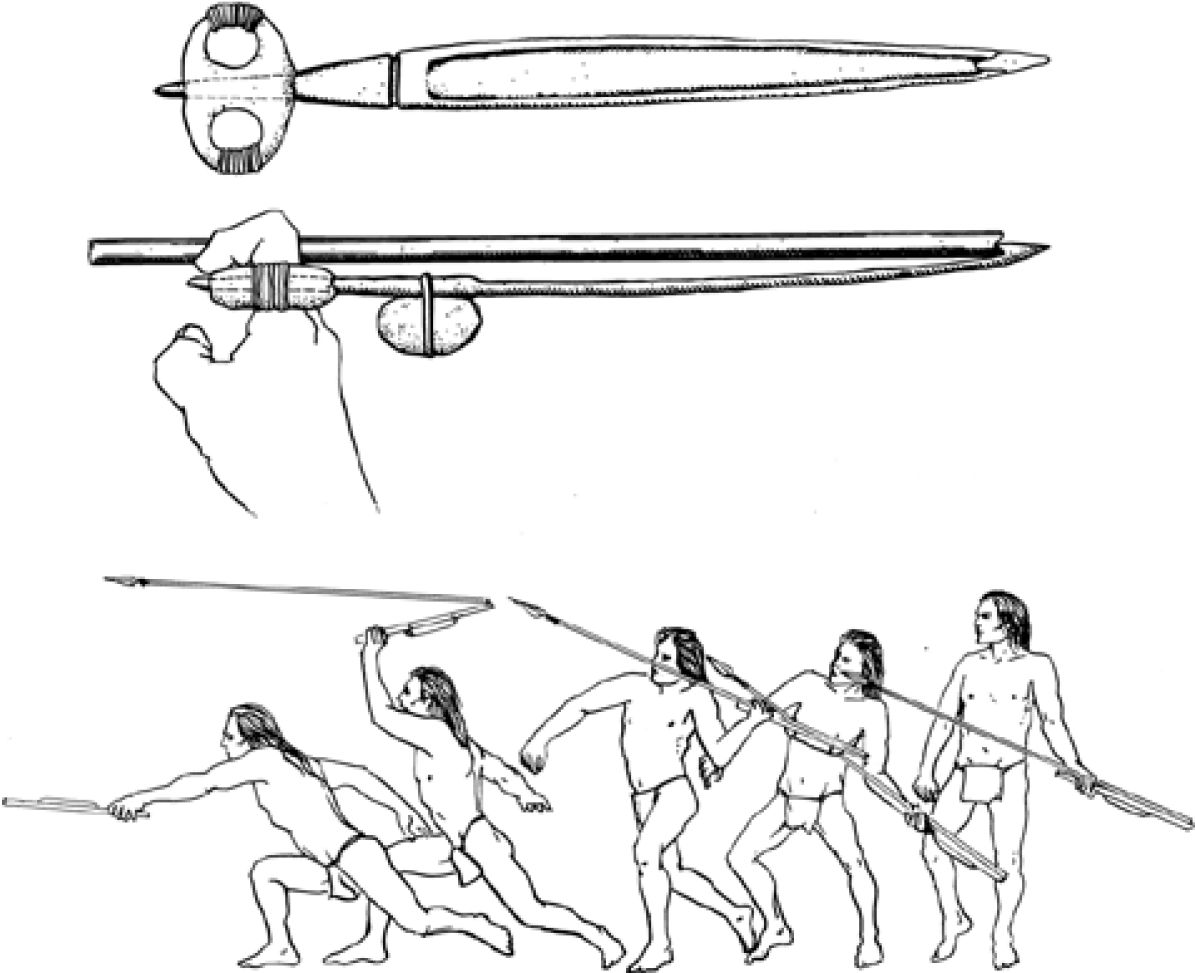
The size of the atlatl varied with the size of the prey or distance of the throw needed. Smaller ones were used for fishing, and larger ones for spearing ungulates and humans. The atlatl comes in a variety of shapes. They are sometimes incised with designs, carved with three-dimensional features or have separate functional or decorative items attached to them. Some have a looped hand grip of leather or plant fibre on the handle and some types have stone weights – used to give the weapon an over-all balance for better aim.
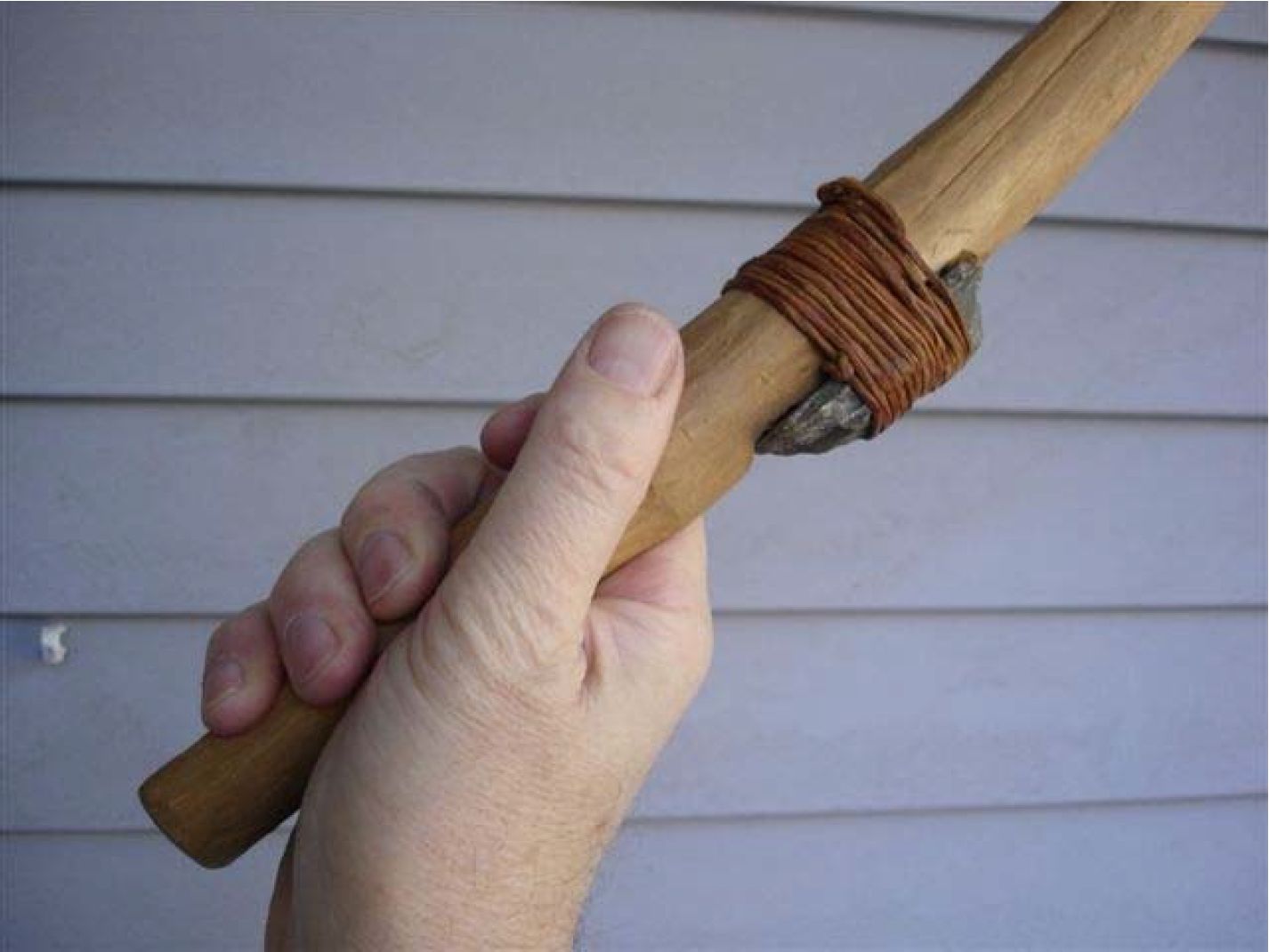
These weapons had many names in the respective cultures in which they were used. However, they were brought to prominence because they were used successfully by the Aztec of Mexico against the Spanish in the 16th century. The name atlatl, used in the Nahuatl language spoken by the Aztecs, came to dominance in European and American literature. The Spaniards dreaded these weapons that often pierced their protective armour. The word atlatl is a combination of the Nahuatl words for “water” and “thrower” in reference to the common use of the atlatls for hunting waterfowl and fish. Technically, only the throwing board is called an atlatl, but the term is now often used to include the throwing board and the small spear it propels.
The late Upper Paleolithic Magdalenian peoples of Europe made beautifully carved specimens from antler and bone 17,000 years ago.
Immigrants from Siberia likely brought the atlatl to North America, where it was used to hunt large animals by at least 10,000-12,000 years ago. Atlatl spears were likely tipped with the large flaked stone points that archaeologists find associated with remains of now-extinct mammoth and bison, as well as other large game animals.
In more recent times we know the atlatl was also used for hunting sea mammals, birds and fish. The Inuit and Aleut of the Arctic, the Tlingit peoples of the southern coast of Alaska and northern coast of British Columbia, and some peoples of southeastern United States, Mexico and northern South America, still used the atlatl when Europeans first arrived. However, in most regions of the New World, the bow and arrow replaced the atlatl.
Atlatls and Arrows
Archaeologists believe that the trend toward small stone projectile points (tips for arrows or spears), and the shift from making these points with tapered bases, as opposed to thinner-necked notched bases, is evidence for the replacement of the atlatl by the bow and arrow. This change in point size and style occurred most typically around 1,350 years ago, but some researchers argue that the bow and arrow was introduced earlier in some areas of North America.
In the Great Basin (centred on Nevada, USA) there are indications that the bow and arrow may have come into use 2,000 to 3,500 years ago. The bow and the atlatl were both in use there for several hundred years. In the American Southwest the atlatl may have finally been abandoned at about the same time that the bow reached the area – shortly after 2,000 years ago. Except for a few rare finds in dry cave sites, there is little evidence for the use of bows and arrows in the American Southwest before about 1,500 years ago. The period between 2,000 and 1,500 years ago is the time usually given for the introduction of the first arrowheads in western Canada. Future research is likely show variations in both atlatl and arrow point styles over space and through time.
Stone atlatl weights, attached to the underside of the throwing board, are found in several regions of North America – including a small area of southwestern British Columbia extending from Southern Vancouver Island up the Fraser River to the southern Interior. These items are poorly dated, but would seem to occur, at least, in the period around 1,700 to 2,000 years ago.
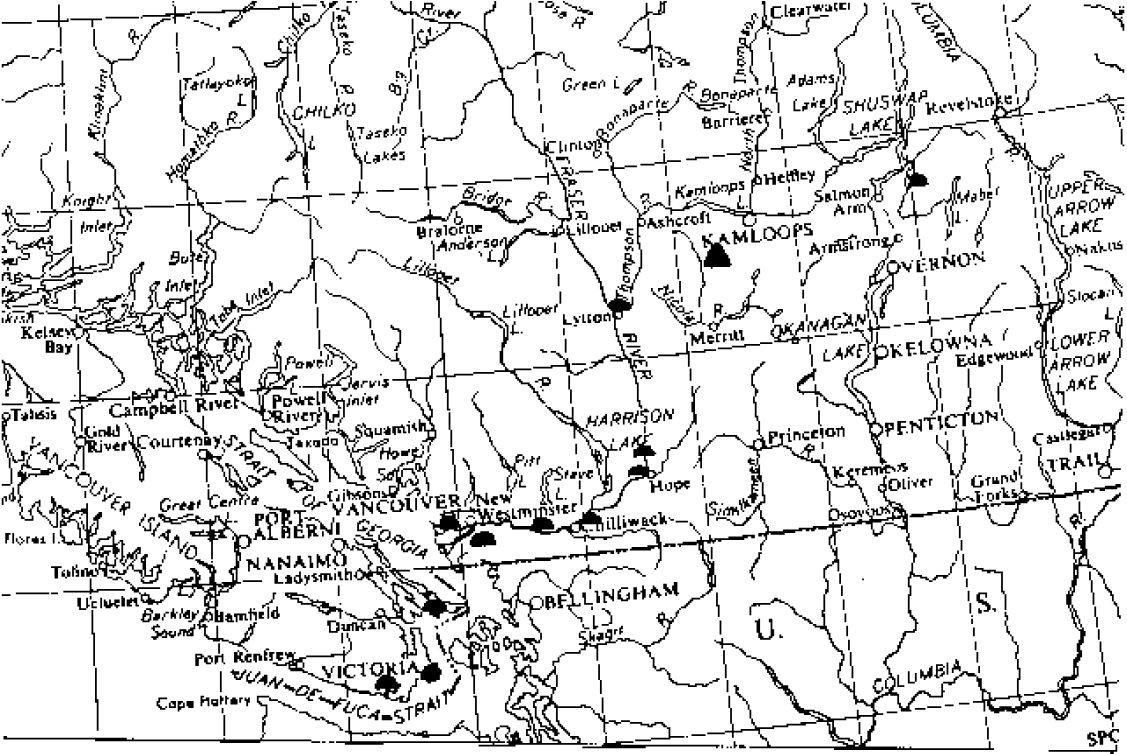
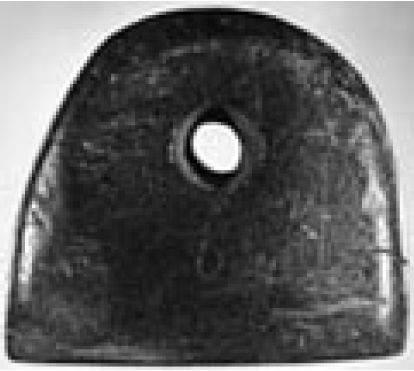
Atlatls from southern North America were adorned with good luck charms, including nuts and quartz crystals. I speculate that some of the small stone weight-like artifacts found in British Columbia may also be power charms that were attached to the atlatl to bring the user luck in hunting.


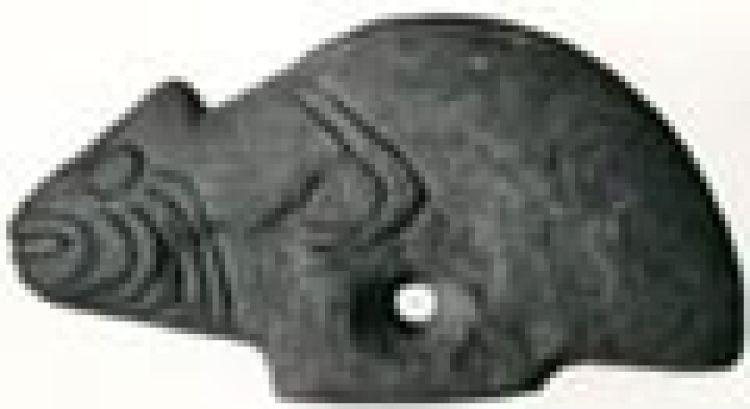
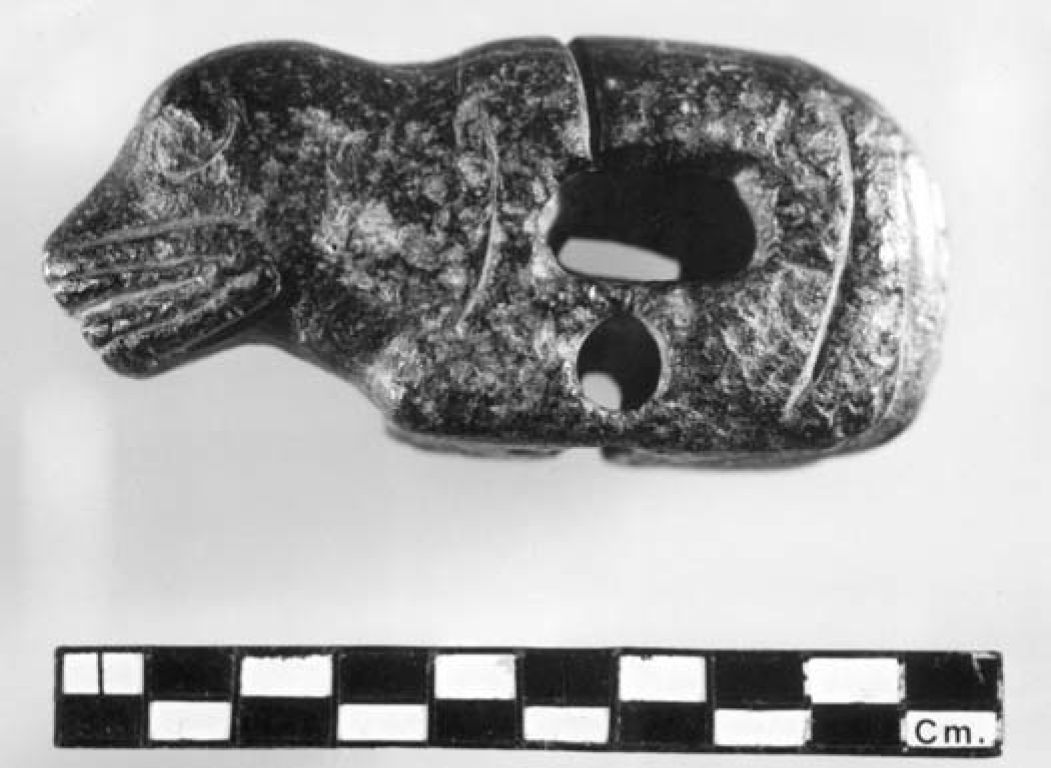


Some archaeologists have claimed to be able to identify the bone pin attachments used to hold the end of the spear to the throwing board. Without a good sample of specimens attached to preserved atlatls to use for comparison, it is difficult to be certain that these are in fact atlatl spurs. The bone items suggested as atlatl spurs have been found with artifact assemblages dating from 3,000 to 1,500 years ago in southwestern British Columbia.
Complete wooden atlatls with attachments have been found in dry cave sites in Utah, Nevada and Oregon, USA, dating to about 8,000 to 1,600 years ago. Atlatls have also been preserved in waterlogged conditions in Florida, and one made of yew wood, dating to 1,700 years ago, was dredged from the Skagit River in northern Washington State. In British Columbia and the Yukon wooden atlatl dart fragments have been found eroding out of melting glaciers. One of the dart fragments dated to 7,000 years ago. An antler specimen dating to 2,000 years ago was found at the bottom of the freshly drained Quiltanton Lake in the southern Interior of British Columbia, east of Ashcroft. These finds confirm the existence of at least one local type of flat, unspurred, prehistoric atlatl. We can now be optimistic that these and future finds will provide new insights into the role of this unique kind of technology in the history of British Columbia.
